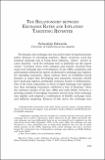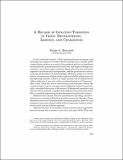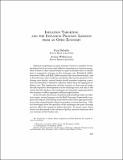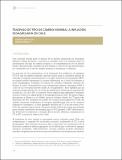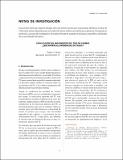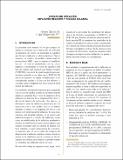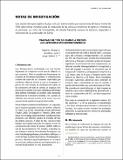Buscar
Mostrando ítems 1-10 de 22
The relationship between exchange rates and inflation targeting revisited
For decades, the exchange rate was at the center of macroeconomic policy debates in emerging markets. Many countries used the nominal exchange rate to bring down inflation, –others—mostly in Latin America—used the exchange rate to implicitly tax the export sector. Currency crises were common and usually ...
Inflation targeting in Brazil: shocks, backward-looking prices, and IMF conditionality
In mid-January 1990, Brazil abandoned its crawling exchange rate band. Surprisingly enough, the country's economic performance in the aftermath of this episode was much better than expected, given the performance of other emerging market economies after a move toward floating. Despite the large ...
A decadeof inflation targeting in Chile: developments, lessons, and challenges
In the twentieth century, Chile experienced most monetary and exchange rate regimes. Periods of fixed exchange rates usually ended in speculative attacks as a result of inconsistent policies or significant external shocks, generating serious real costs and larger exchange rate volatility.
Inflation targeting and the inflation process: lessons from an open economy
Inflation targeting in an open economy insolves a number of complexities that do not arise with inflation targeting in a clises economy. One of these is that central banks in open economies have to decide how to repond to changes in the exchange rate.
Traspaso de tipo de cambio nominal a inflación desagregada en Chile
Una cuestión central para el manejo de la política monetaria en economías abiertas a flujos de bienes y servicios es entender cuál es la relación entre los movimientos del tipo de cambio nominal y el comportamiento de los precios locales. En particular, entender en qué medida, y a través de qué ...
Fiscal inflation and cosmetic defaults in a small open economy
For a small open economy, maintaining a stable exchange rate and moderate levels of inflation is often a goal of primary importance. At the same time, the profession has recognized the tight link between fiscal and monetary policies in determining inflation dynamics. Thus, the goal of a stable exchange ...
Explicación del movimiento del tipo de cambio ¿qué aporta el diferencial de tasas?
En una economía pequeña y abierta como la chilena, el tipo de cambio (TC) es una variable fundamental para la determinación de la inflación y la actividad. Una buena comprensión de los movimientos pasados y futuros del TC parece esencial para una política monetaria adecuada. La presente minuta analiza ...
Shocks de inflación, inflación negativa y rigidez salarial
La presente nota estudia el rol que juegan las rigideces salariales en la trayectoria de inflación en presencia de shocks, en particular de aquellos que llevan la inflación a valores negativos. Para lo anterior se utiliza el modelo estructural de proyecciones MEP — que se supone en equilibrio inicial— ...
Traspaso de tipo de cambio a precios: una aproximación microeconómica
Las fluctuaciones cambiarias son una fuente importante de variaciones en la tasa de inflación de una economía. Ellas se manifiestan directamente en el precio de los bienes importados, e indirectamente a través del costo de los insumos importados que contienen algunos bienes y que se traspasan al precio. ...
Comfort in floating: taking stock of twenty years of freely floating exchange rate in Chile
Chile offers an example of a country that has overcome the fear of floating by reducing balance-sheet mismatches; enhancing financial-market development; and improving monetary, fiscal, and political institutions; while strengthening policy credibility. Under the floating regime, Chile’s economic ...

